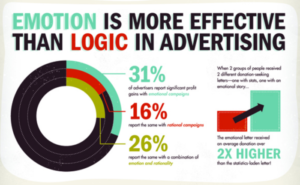Introduction
Turning online content into published works has many benefits. It helps creators reach new audiences, establish credibility, and even generate additional income. but making the transition from digital to print can be challenging, especially for those who don’t know about the publishing industry.
In this blog post, we’ll guide you on the ways to turn your online content into published works. we will explore every step from selecting the right content and structuring it for publication to finding a publisher and exploring self-publishing. Along the way, you’ll find real-life case studies to inspire you. we will give you insights into how others have successfully made the transition from online to offline.
Lorem ipsum dolor sit amet, consectetur adipiscing elit. Ut elit tellus, luctus nec ullamcorper mattis, pulvinar dapibus leo.
Identifying Content Worth Publishing
Identifying the right online content to reuse in a published work is a very important first step. The main thing is not all digital content translates easily into print. it is important to understand what makes particular types of content suitable for publishing.
Characteristics of Publishable Online Content
Following are the main features of content which is online publishable.
Evergreen Content:
That content remains relevant over time and is ideal for publishing. In contrast to trending topics that quickly become outdated the evergreen content has a longer shelf life. It can continue to attract readers well into the future.
Depth and Detail:
Online content that explores a subject in depth and offers detailed insights is better suited for publishing. This could include detailed blog posts, in-depth essays and extended social media series.
Consistent Theme:
Content that revolves around a specific theme, topic and narrative makes it easier to assemble into a stable published work. Consistency helps maintain reader interest. It also provides a clear direction for the publication.
Common Types of Online Content for Publishing.
There are some common types of publishing online content such as :
Blog Posts:
Most of the published books start as a collection of popular blog posts.
Bloggers with a huge following often have a ready-made audience for their published works.
Social Media Series:
Creators who develop a fact base and professional work across social media platforms can transform these stories into published works. Instagram or Twitter threads that explore a topic in depth are top examples.
From Blog to Book
One of the best-known examples of turning online content into a published book is the story of Julie Powell. She gained fame with her blog “The Julie/Julia Project.” Powell’s blog documented her year-long journey of cooking all the recipes from Julia Child’s “Mastering the Art of French Cooking.” The blog was so popular that it led to a book deal that resulted in her memoir “Julie & Julia,” which then became a major motion picture. Powell’s engaging writing style, unique premise and loyal following made her content ideal for reusing into a book. This demonstrates how an online project can evolve into a published work.
Structure Your Content for Publication
When making online content into a published work you need to understand the structural differences between digital and print formats. Online content usually has a more casual structure and published works need a clear organization and consistent layout. Here are detailed key aspects to consider when structuring your content for publication.
Structural Differences Between Online Content and Published Works
Now we will discuss about the difference between the online content and published work.
Length and Depth:
Published works such as books and longer articles tend to have greater depth and length as compared to online content. On the other hand, the blog posts and social media content are precise but a book needs a more detailed exploration of the topic.
Chapters and Sections: Published works are typically divided into chapters or sections, each with a specific focus. Online content may not always have such a defined structure, often relying on short, standalone pieces.
Consistency and Flow:
A solid script needs a theme that connects the content. This differs from online content which may explore a variety of unrelated topics.
Tips for Organizing Content into a Cohesive Manuscript
We’ll share some practical tips to organize your content:
Create an Outline:
Always Start by creating a detailed outline that covers the main points you want to include in the content. This will help you to visualize the structure of the final script.
Group Related Content:
It is recommended to Identify pieces of online content that share a common theme and divide them into chapters or sections.
Ensure a Logical Flow:
Arrange the content in a way that creates a logical progression. This will help you to keep readers engaged. It will also provide a clear narrative throughout the work.
Use Transitional Elements:
To ensure smooth conversion between chapters and sections consider adding introductory paragraphs. This will connect the content.
Importance of a Clear Narrative or Theme
Having a clear theme throughout the book is very important. It provides readers with a connected experience. It will also make the content feel like a connected work rather than a collection of unrelated pieces. You can also Consider using a central idea to guide the structure of the script to readers.
From YouTube to Print
An excellent example of turning online content into a well-structured book is the story of Michelle Phan, a YouTuber known for her beauty and makeup tutorials. Phan’s YouTube channel gained millions of subscribers. Her main focus a on beauty tips, makeup tutorials, and personal stories. Her success on YouTube led to the publication of her book “Make Up: Your Life Guide to Beauty, Style, and Success—Online and Off.
In her book, Phan reworked her video content into a well-structured guide. she covered many topics related to beauty and style. She used a clear idea and combined personal stories with practical advice. She created a solid structure and added depth to her content. She successfully turned from YouTube videos to a published book writer. this demonstrates the potential for content creators to reach new audiences through print.
Finding a Publisher or Self-Publishing
After structuring your content for publication the next step is deciding whether to go for publishing or self-publishing. Both routes have their benefits and challenges. The foremost thing is your choice will depend on your goals, resources, and the level of control you desire over the process. We will discuss each option available and tips to find your way in the publishing industry.
Typical Publishing: Benefits and Challenges
We will see the benefits and potential challenges you can face during the process of publishing such as:
Benefits:
Typical publishers give services usually in editing, marketing, and distribution. They mainly have established relationships with bookstores and can help you reach a broader audience. You can get another benefit if Working with a publisher which is it provides credibility and prestige. it may then open doors to more opportunities.
Challenges:
The traditional publishing process is lengthy and also competitive. Getting an agent or publisher interested in your work needs a compelling pitch and still, there’s no guarantee of success. Authors may also have less creative control over their work because publishers may suggest changes to fit market demands.
Self-Publishing: Benefits and Challenges
Self-publishing has its perks and demerits such as:
Benefits:
Self-publishing provides you with complete creative control over your work. You can publish your work at your own time, choose your book’s design, and set your pricing. Self-publishing platforms like Amazon handle Direct Publishing (KDP), IngramSpark, and Smashwords make the process of publishing accessible and relatively straightforward. In self-publishing, Authors also retain a larger share of royalties compared to traditional publishing.
Challenges:
Self-publishing needs you to handle everything. Generally from editing and design to marketing and distribution. Without a publisher’s support, it can be challenging to gain transparency and build an audience. Also, self-published books may not have the same level of credibility as traditionally published ones.
Tips for Querying Publishers and Agents
We have compiled some tips for you to querying publishers and agents:
Research the Market:
For your work publication, you need to Identify publishers and agents that align with your content’s genre and style. Search for ones who have published similar works and have a track record of success.
Making a Compelling Query:
A query letter is your first impression for publishers so make it count. Clearly describe your content to them, its appeal, and why it would be a good fit for the publisher.
Prepare a Strong Proposal:
Make an overview of your book, a detailed outline, sample chapters, and information about your theme. This gives publishers a default view of your work and its potential.
Popular Self-Publishing Platforms and Their Advantages
Amazon Kindle Direct Publishing (KDP):
They provide a direct way to self-publish eBooks and print-on-demand paperbacks. KDP gives global distribution through Amazon. It also allows authors to set their prices and earn royalties.
IngramSpark:
It is known for its detailed distribution network. IngramSpark lets authors self-publish print books and eBooks. It majorly connects with top bookstores and libraries and provides a broader reach.
Smashwords:
This platform Focuses on eBook distribution. It helps authors to publish their across multiple platforms like Apple Books, Barnes & Noble, and Kobo. It also gives a single dashboard for managing distribution.
From Blog to Self-Publishing
The best example of a blogger who successfully self-published is Amanda Hocking. She is q a young author who began by self-publishing her fantasy novels on Amazon KDP. Hocking got several followers by promoting her books through her blog and social media. Her success as a self-published author eventually led her to a multi-million-dollar deal with a traditional publisher.Hocking’s journey gives us the best example of the potential of self-publishing as a stepping stone to typical publishing. She built her audience. She proved the appeal of her work. She attracted the attention of major publishers and showed that self-publishing can be a direct path to success.
Conclusion
Transforming your online content into published works can be a groundbreaker. It’s not just about reaching new audiences instead it is about solidifying your voice and making your way in the world of publishing. But the road from a digital footprint to a published book or article isn’t simple.
In this guide, we’ve discussed the key steps to help you go smoothly through this transition. We’ve talked about finding the right content to publish. We also saw that organizing it into a solid structure and weighing the benefits of typical publishing versus self-publishing. We also covered some original examples of creators who successfully made their way. They have proved that with the right approach, you can turn their online content into a successful publication.
So if you’re thinking about turning your blog posts, social media content, or other online materials into a book, take the step right now. It is recommended to Start by identifying your best content, create an outline, and decide whether to go with a publisher or self-publish. No matter which route you choose for publication your goal is to create something that goes well with readers and reflects your unique voice.



